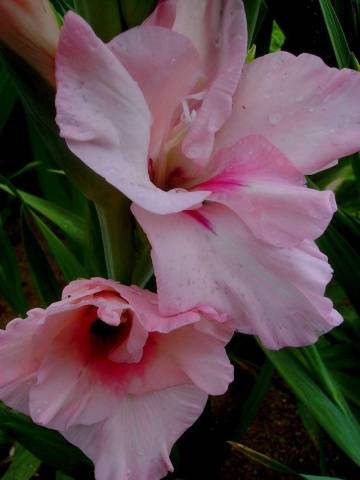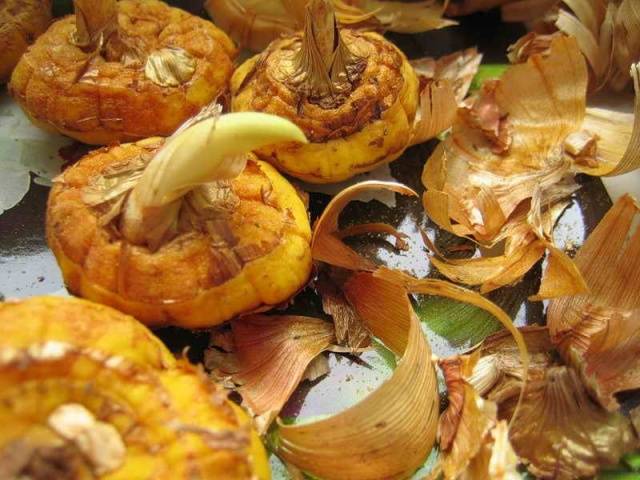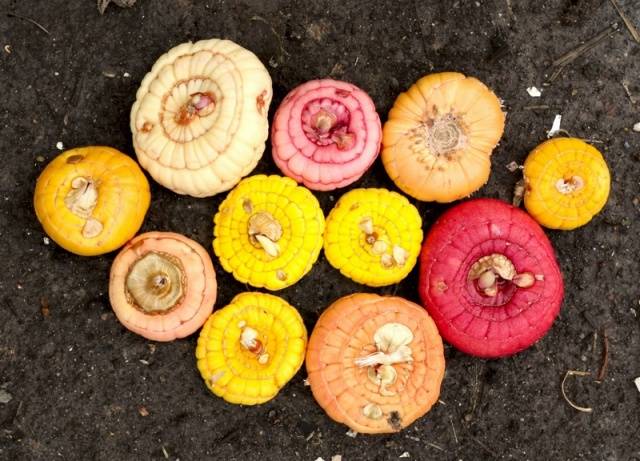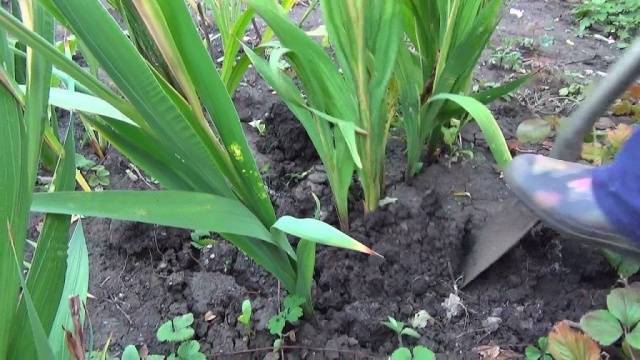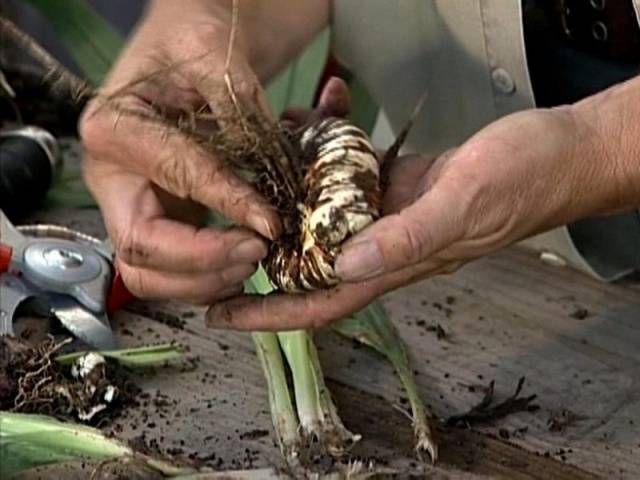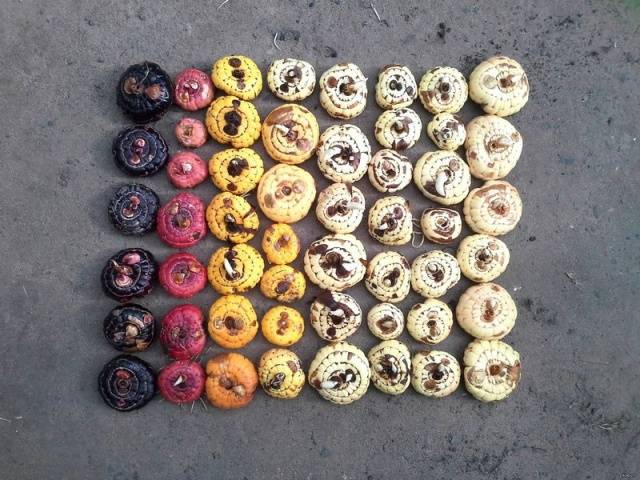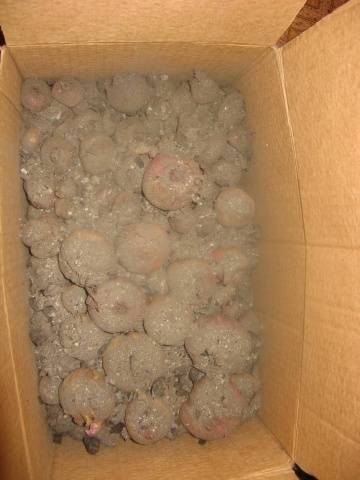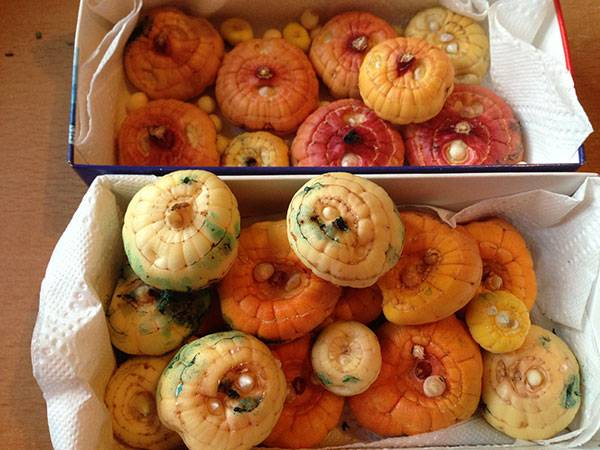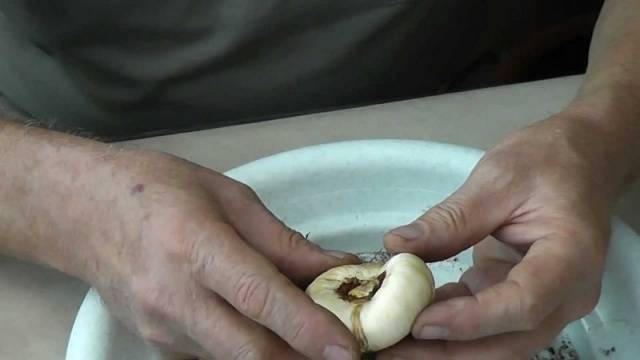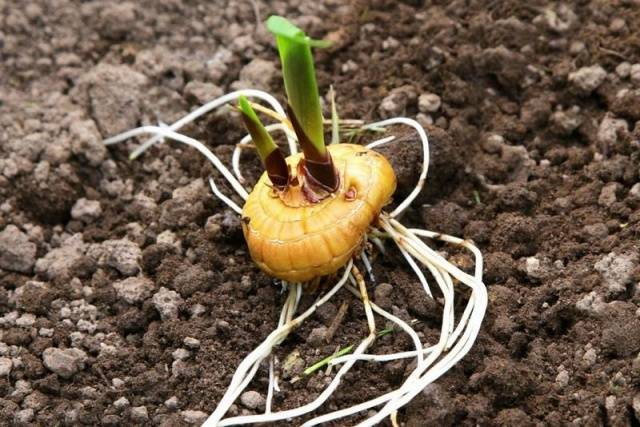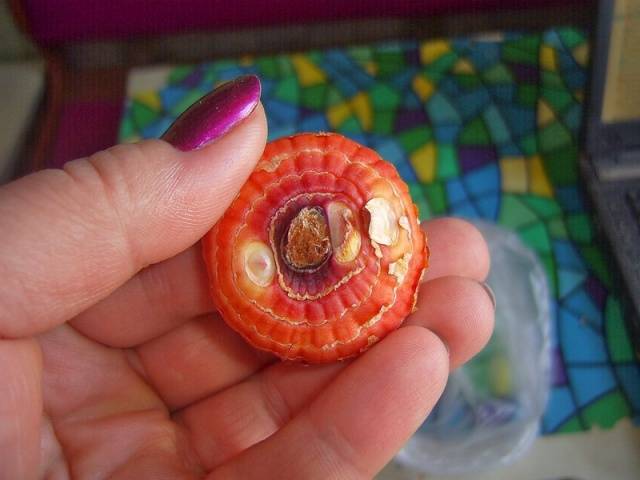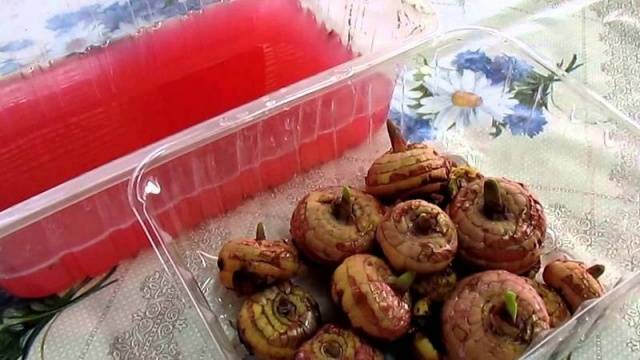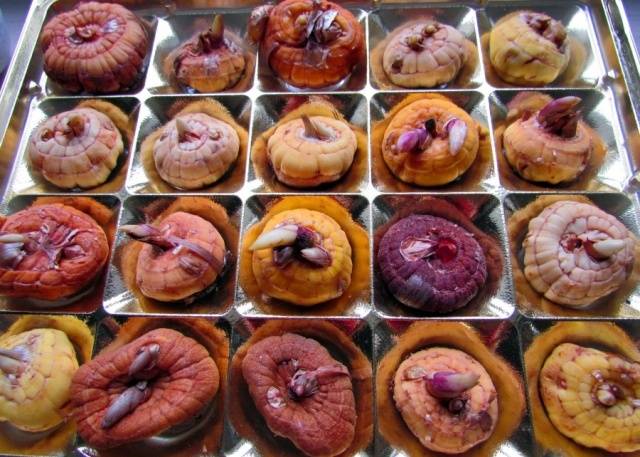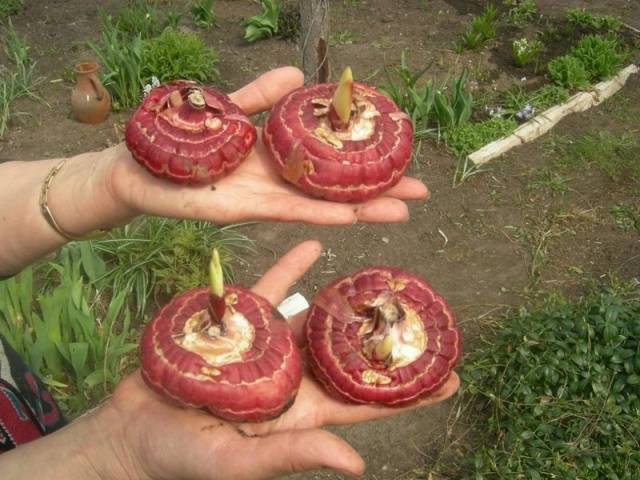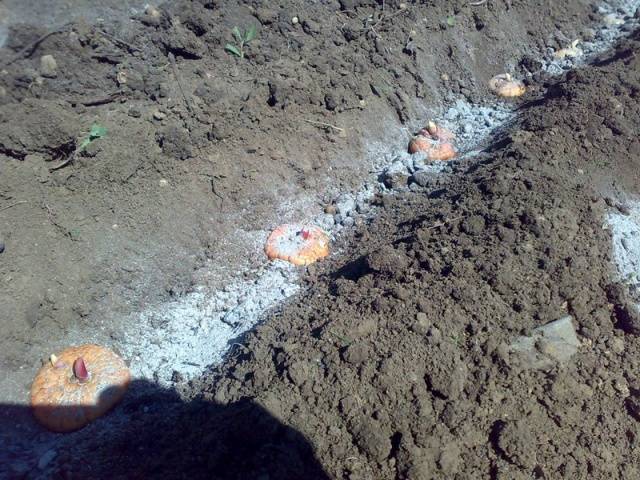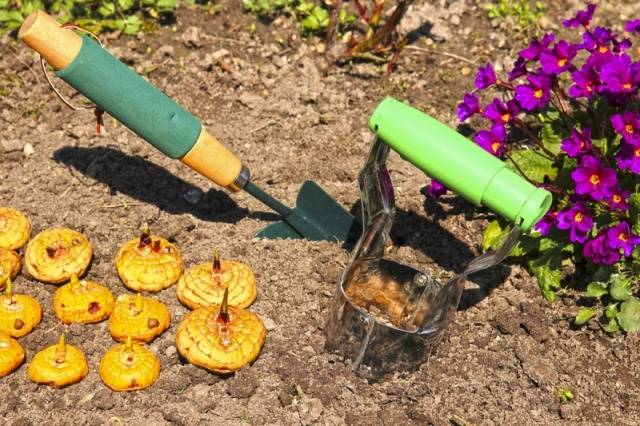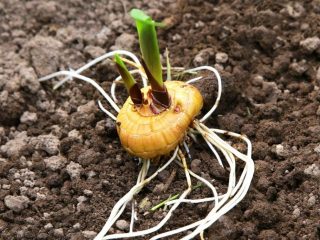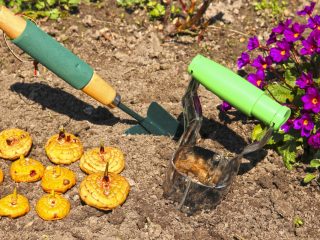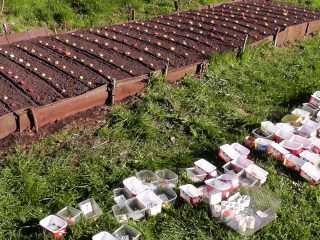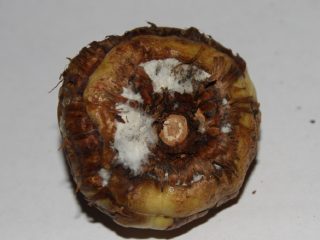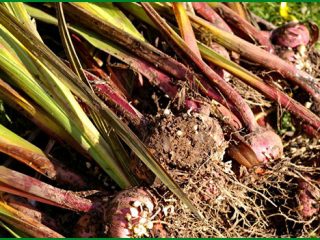Content
According to a beautiful legend, gladioli grew from the swords of two best friends who refused to fight against each other in gladiator matches. The sharp and long leaves of these flowers really look like blades, which is probably why gladioli are also called swords.
Many gardeners are afraid to get involved with these flowers, believing that they are difficult to grow.
But, as practice shows, you don’t need to know any special tricks to get beautiful flowers on your site. The most important thing is to properly prepare the corms for spring planting.
What is the treatment of gladiolus bulbs, how to properly store planting material, and what rules should be followed during planting - this is what the article is about.
Selection of planting material
It doesn’t matter where the gardener will get his first gladioli bulbs from: he will receive them as a gift from his neighbors in the country or buy them for a lot of money in a specialized store. In any case, the owner must be able to distinguish high-quality planting material from bulbs that are unsuitable for planting in the spring.
So, when choosing corms, you need to focus on the following factors:
- Young gladiolus bulbs that have already bloomed no more than once are considered more suitable for purchase.In this case, the bulb will be tall, not flattened, it will have a small bottom and one or two buds - the makings of peduncles.
- When accepting corms as a gift, you can choose those that have not yet bloomed at all. But these must be healthy and fairly large bulbs, with a small bottom. You can recognize such planting material by the absence of last year's peduncle. But the onions must have the makings of at least one bud.
- The so-called girl bulbs obtained as a result of too thick planting of gladioli (for example, when flowers are grown for cutting) are completely unsuitable for propagation. Such corms are incorrectly formed due to a lack of necessary elements; they will not produce flower stalks.
- You should never give money for old gladioli corms that have already bloomed more than four times. They are easy to recognize by their flattened shape, and the bottom of such an onion will be very large. You can try to propagate old corms by dividing them into several parts according to the number of buds.
- From children, with proper preparation, you can also get a good peduncle. But it’s not worth buying such planting material - there is a high risk of paying for greens and not flowers.
- Bulbs for planting must first be healthy. Their surface is shiny, without dark spots and rot. The onion should be firm, not shriveled or softened. In the upper part of a healthy tuber, buds can be seen, and from below, tubercles, the rudiments of the root system, should be visible.
As a rule, such flowers are more susceptible to disease and require more complex processing and care.It is better to start with the most common varieties of gladioli - they are the easiest to grow.
How to store corms in winter
Processing gladioli bulbs is, of course, very important, but no less important is to be able to properly collect and store planting material in the autumn-winter period. After all, it depends on this how many bulbs will sprout and turn into beautiful flowers.
It is necessary to collect bulbs when:
- the temperature outside is above zero;
- the ground between the flowers is dry;
- the stem and leaves of the gladioli have dried out;
- There are no severe frosts yet.
If all conditions are met, then the bulbs will be fully ripe, dry and ready for long-term storage.
Unfortunately, not in all regions of Russia the climate allows keeping corms in the ground as long as they need for final formation. After all, early frosts, heavy and prolonged rains are not uncommon here - all this has a bad effect on the quality of planting material and significantly increases the risk of bulbs becoming infected with fungal diseases.
In order for the bulb to complete its formation faster, it is recommended to cut off the stem of the gladiolus a week before digging it up - leaving only 10-15 cm of the peduncle.
In dry and warm weather, they begin to dig up the bulbs. Before this, gladioli stop watering about 10-14 days in advance. Carefully dig up the ground around the flowers and slowly pull the stem or its cuttings - the bulb should easily come out of the ground.If the roots are holding it up, it means that the corm is not yet mature enough; it is better to give it a few extra days.
The dug up bulbs must be cleared of soil, old dry roots must be removed by cutting them off with pruners or scissors (about a centimeter of rhizomes are left). The flower stalks are also trimmed, leaving only a couple of centimeters. If the stem is easily separated from the gladiolus tuber, you can remove it altogether.
The bulbs must be sorted and marked so that you know where certain varieties and shades of gladioli are stored. This will help you properly design your flower garden or flower bed next season.
Now the bulbs are dried for several days in a dark and dry place. If there are rotten or infected corms, they need to be removed and, best of all, burned so that the infection does not enter the soil.
Gladioli bulbs must be stored in a cool and dark place with constant temperature and humidity. Fluctuations in temperature and humidity conditions can lead to gladioli “waking up” too early, which can result in losing all the flowers.
The best place to store planting material is the basement. Here gladioli are stored in boxes with sand, peat or sawdust. The bulbs are sprinkled with layers of porous materials, slightly moistened with sand or sawdust.
In this form, gladioli are stored until next spring.
How to treat gladioli bulbs in spring
Bulbs are taken out of the basements two weeks before planting in the ground, so this date may vary significantly in different regions. For example, in the south of Russia, gladioli are planted in flower beds, usually in mid-April. This means that it is necessary to remove the bulbs from the shelter at the end of March.
But in the northern part of the country the earth will warm up only by the end of May; sometimes gladioli have to be planted here even in early June. Therefore, you need to get boxes with tubers from the basements no earlier than the first ten days of May.
In general, you need to be guided by the following rule - gladioli bulbs can be planted in the soil when the soil at a depth of 10 cm warms up to 10 degrees or higher. Remembering past seasons and climatic features of several previous years, you can calculate the approximate date of planting flowers. 10-14 days before the expected planting, the bulbs begin to be prepared for this.
So, before processing the bulbs, peel them. This is necessary in order to recognize diseased specimens, see buds and root buds, and divide the corms into several parts.
After examining the planting material, it is necessary to discard those bulbs that are affected by rot, mold or fungus - they cannot be saved. But you can help those gladioli that are affected by scab or dry rot. In this case, the brown spots should be cut off with a sharp, disinfected knife, and the cut should be smeared with brilliant green or sprinkled with wood ash. After a couple of days, the wound will heal, and the gladiolus can be planted in the ground.
The same is done with gladioli bulbs that want to be renewed or propagated - they are cut with a knife, guided by the number of buds that have hatched. After cutting, at least one “live” bud should remain on each part of the tuber. This stage is especially important for expensive bulbs of elite gladioli, because this way rare flowers can be propagated faster and more efficiently than with the help of “babies”.
The sections must be dipped in wood ash or thickly treated with brilliant green. Now they are allowed to weather for 1-2 days.
To disinfect gladioli and stimulate them to bloom earlier and more abundantly, gardeners use many methods and tricks. The most popular methods for processing bulbs are the following:
- Soaking the bulbs in a manganese solution. To do this, prepare a strong solution of potassium permanganate and place the tubers there for 25-30 minutes. After the procedure, the gladioli are washed with running water and dried thoroughly. All this is necessary to disinfect gladioli and protect the bulbs from fungal and other infectious diseases.
- Using growth and flowering stimulants for indoor or garden flowers. This could be Epin, Kornevin or other similar drugs. They also make flower roots form faster, which makes it easier for gladioli to adapt to flower beds.
- Some gardeners recommend scalding planting material with boiling water. This is done briefly, in the form of an application, after which the bulbs are washed with cold water. This method is effective both for stimulating flowers and for disinfecting them. But it is better not to use the method with boiling water for beginners in gardening - you can seriously injure already hatched shoots and roots.
- A complex solution of microelements is less safe than boiling water, but no less effective. To prepare the mixture, take manganese, boric acid, ammonium molybdide, zinc, magnesium sulfate and copper sulfate, dissolve all components in water and soak the bulbs in this solution for 10-12 hours. This will speed up the flowering of gladioli, increase the size of the flowers, increase the immunity of the plants and make them stronger. But not every owner has all the drugs on this list on hand.
You can process gladioli bulbs in any way - many gardeners skip this stage altogether and immediately begin germinating the tubers.
How to germinate gladioli
Prepared bulbs must be placed in wooden or plastic containers. Lay them out in one or two layers, so that the buds are directed upward and the bulb lies on the bottom.
If there are two layers, you need to make sure that all the buds are visible - the bulbs of the top row are laid in a checkerboard pattern.
Containers with gladioli are placed in a warm place, with a temperature of 25-28 degrees. They should also have enough sunlight, so the best place for germination is a windowsill or table by the window.
If the owner notices that the gladioli bulbs are becoming lethargic and faded, they need to be watered a little - sprayed with a spray bottle or poured water into a container with the bulbs. But gladioli are watered only as a last resort; this can lead to too rapid formation of the root system, and this is undesirable. This is because the roots of gladioli are too fragile; when transplanted, they will certainly break off, which will complicate the adaptation of flowers.
After a few days, the buds on the gladioli bulbs should hatch - small green bumps will appear from them. These are future flower stalks. After 7-10 days, the sprouts should reach 1-3 cm in height, and swollen root tubercles should be visible in the lower part of the bulb.
In this state, gladioli are ready to be planted in the ground. Immediately before planting, it is recommended to treat the bulbs with fungicidal solutions, such as “Maxim” or “Fundazim”. Prepare the preparations in accordance with the instructions, and soak the gladioli in them for about two hours.
Recommendations for planting gladioli
All that remains is to plant the gladioli bulbs and wait for the flowers to appear. To do everything right, you should follow some recommendations:
- You cannot grow gladioli in one place for two seasons in a row - at least three years must pass between plantings in the same area. This is due to the predisposition of flowers to fungal diseases and the ability of the spores of these pathogens to be stored in the ground for a long time.
- Tall flowers do not like strong winds and drafts - this can bend or break their stems. Therefore, gladioli are planted on the leeward side of the site.
- Flowers love the sun; the best place for them would be a well-lit part of the garden.
- Low-lying places and wetlands are direct death for gladioli. They are grown in hills that are well ventilated. If the water stagnates or the groundwater is high in the area, gladioli are planted on mounds.
- The soil for these flowers should be slightly acidic. In acidic conditions they do not develop normally, but in alkaline conditions they die.
- To make it easier to dig up the bulbs in the fall, pour a little sand into the hole when planting them. This will loosen the soil.
- The distance between bushes should be at least 20 cm.
- The depth of burying gladioli bulbs depends on their size, it is equal to two diameters of the bulbs.
- When planting, the bulb is lightly pressed to the bottom of the hole and covered with loose soil without pressing it down.
The preparation of the bulbs and their planting are completed. After the height of the shoots reaches 8-10 cm, you can mulch the ground around the gladioli with leaves or sawdust. This will prevent overheating of the bulbs, protect flowers from slugs and weed.
So, there is nothing complicated in growing gladioli; it’s just that, like all decorative flowers, they require a little attention from the gardener and a little bit of his love.
